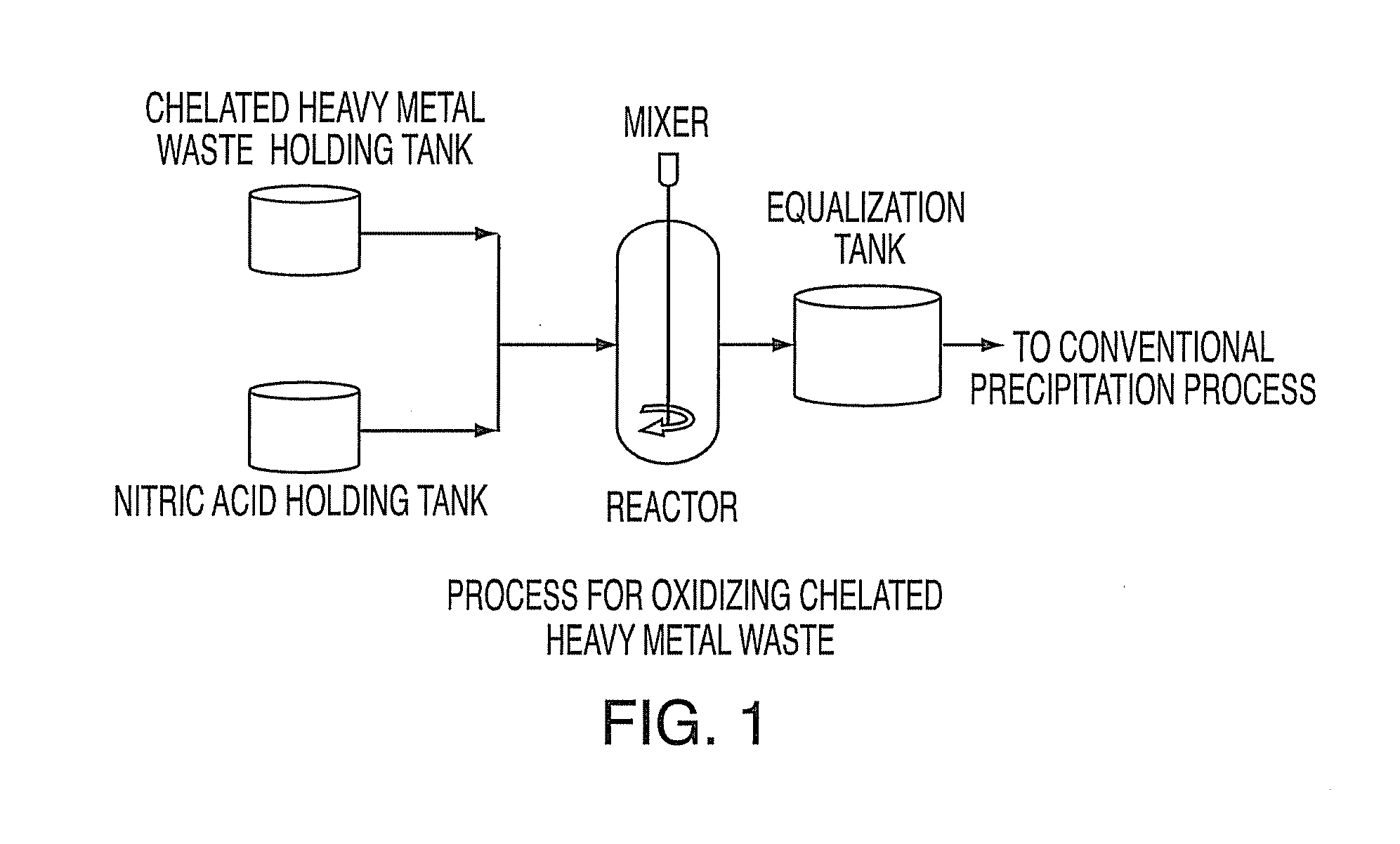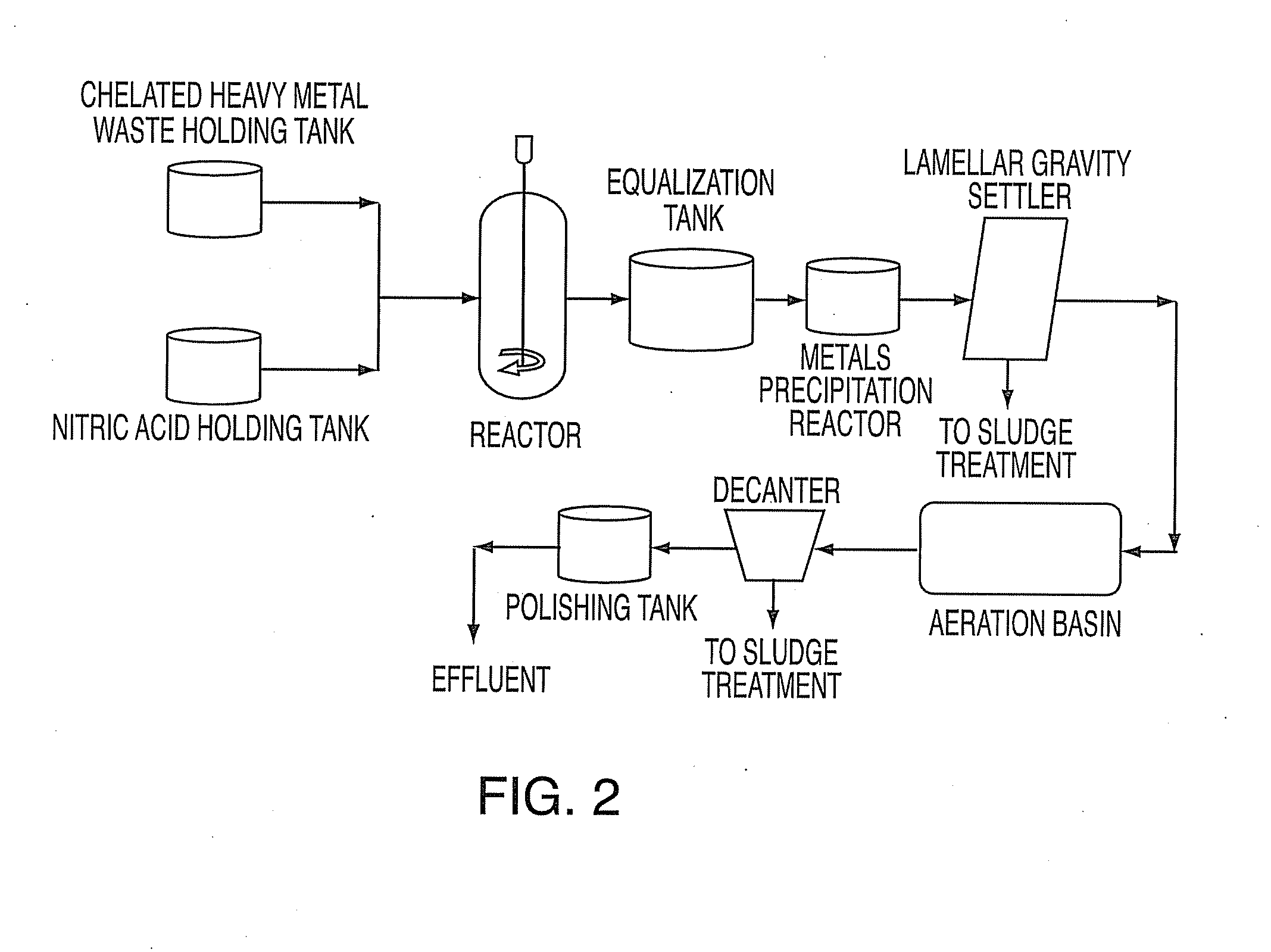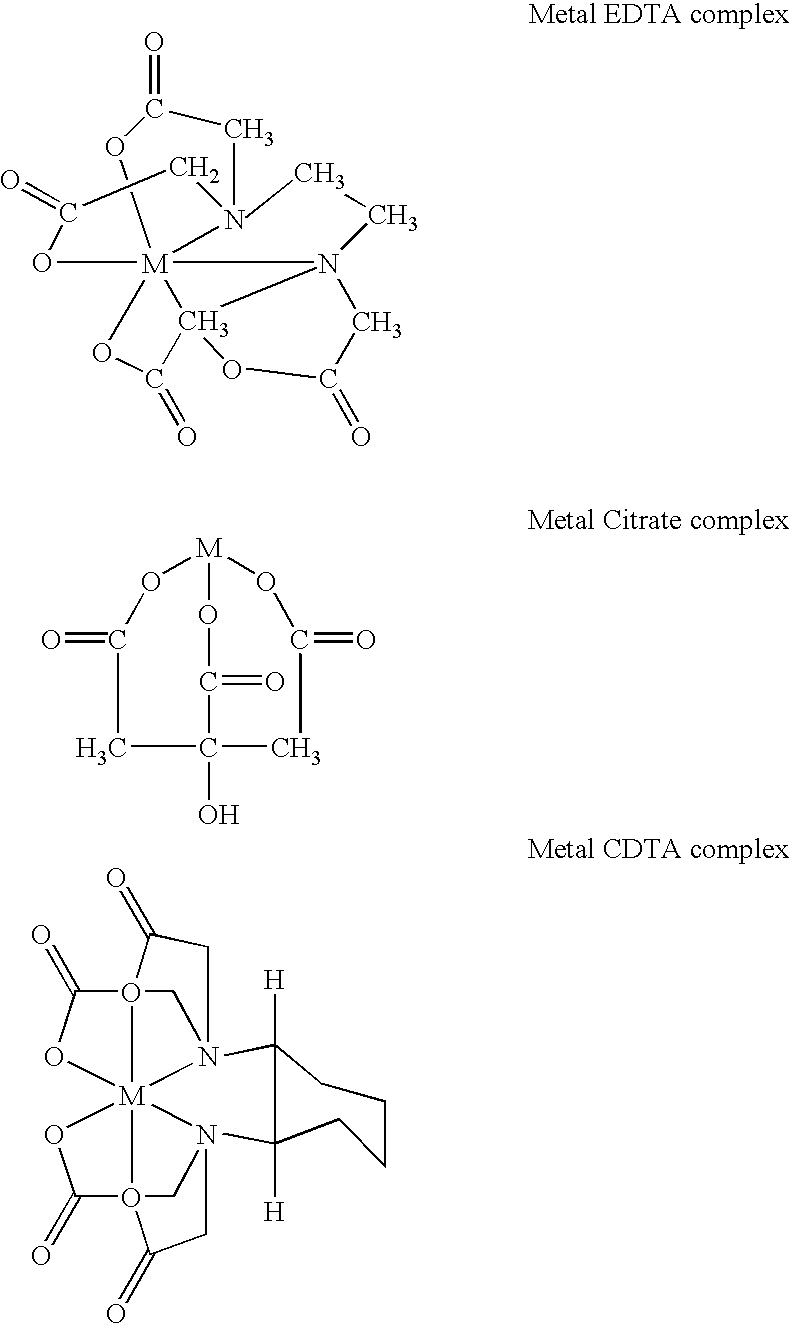Method for treating heavy metals from an effluent containing chelating agents (edta, cdta, or citrate)
a technology of chelating agent and heavy metal, applied in the direction of multi-stage water/sewage treatment, water/sewage treatment by oxidation, water treatment parameter control, etc., can solve the problem of insufficient break up of strong complex
- Summary
- Abstract
- Description
- Claims
- Application Information
AI Technical Summary
Benefits of technology
Problems solved by technology
Method used
Image
Examples
example 1
[0027]The above-described test was conducted using chelated nickel (chelated with EDTA) and varying the parameters of acid concentration, bath temperature, hold (i.e., residence) time, and pressure in different combinations to determine optimal condition to break down the chelated heavy metal complexes. The results are shown in Table 1, below.
TABLE 1 Moles ofnitricacid per8.212 × 10−4RetentionNi initialNi aftermole ofTemp.Pressuretimeconc.treatmentReductionDescriptionchelant(° C.)(psig)(min)(mg / L)(mg / L)(%)Chelating0.08200575603110.9064.93heavy0.1620066060310.5298.32metals0.2420066060310.0999.70complex0.322007006031>99.9wastes0.322007006031>99.90.3218057560310.3398.90.3216040060312.6091.60.3214016060313.3989.00.322007006031>99.90.3220070050310.1299.60.3220070040310.2099.40.3220070030310.2899.1
[0028]It can be seen in the above table that significant removal of heavy metal (e.g., nickel) of appx. 65% can be achieved using the above method even at low concentrations of nitric acid (0.08...
example 2
[0029]A sample of the same waste solution containing heavy metals complexed with a chelating agent as used in Example 1 was treated with nitric acid, about 1 mole per 0.0034 mole of chelant in a Parr digestion bomb reactor. The bomb reactor was heated in an oven at 200° C. for 60 minutes, during which time the pressure reached 700 psig in the reactor. After cooling the bomb reactor, lime was added to the reaction to increase pH to 9.6, followed by addition of a anionic polymer (Nalco 1C34, available from Nalco Chemical Canada) to accelerate the flocculation. Samples were decanted from the treated solution after 10 minutes and filtered before metals analysis. The results are shown in Table 2.
TABLE 2InitialAfter treating byconcentrationoven digestion (ParrPercentage ofHeavy metals(mg / L)bomb) (mg / L)removal (%)Aluminum2.03>98.52Copper0.68>95.58Tin0.14>78.57Iron3.530.0598.58Manganese0.080.0187.50Molybdenum2.860.4883.21Nickel30.20.0999.70Lead1.46>97.94Zinc0.41>92.68
[0030]Treating of the h...
PUM
| Property | Measurement | Unit |
|---|---|---|
| temperature | aaaaa | aaaaa |
| pressure | aaaaa | aaaaa |
| pH | aaaaa | aaaaa |
Abstract
Description
Claims
Application Information
 Login to View More
Login to View More - R&D
- Intellectual Property
- Life Sciences
- Materials
- Tech Scout
- Unparalleled Data Quality
- Higher Quality Content
- 60% Fewer Hallucinations
Browse by: Latest US Patents, China's latest patents, Technical Efficacy Thesaurus, Application Domain, Technology Topic, Popular Technical Reports.
© 2025 PatSnap. All rights reserved.Legal|Privacy policy|Modern Slavery Act Transparency Statement|Sitemap|About US| Contact US: help@patsnap.com



